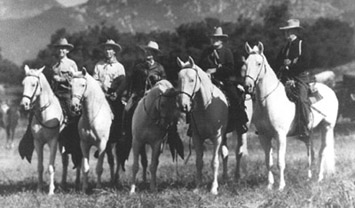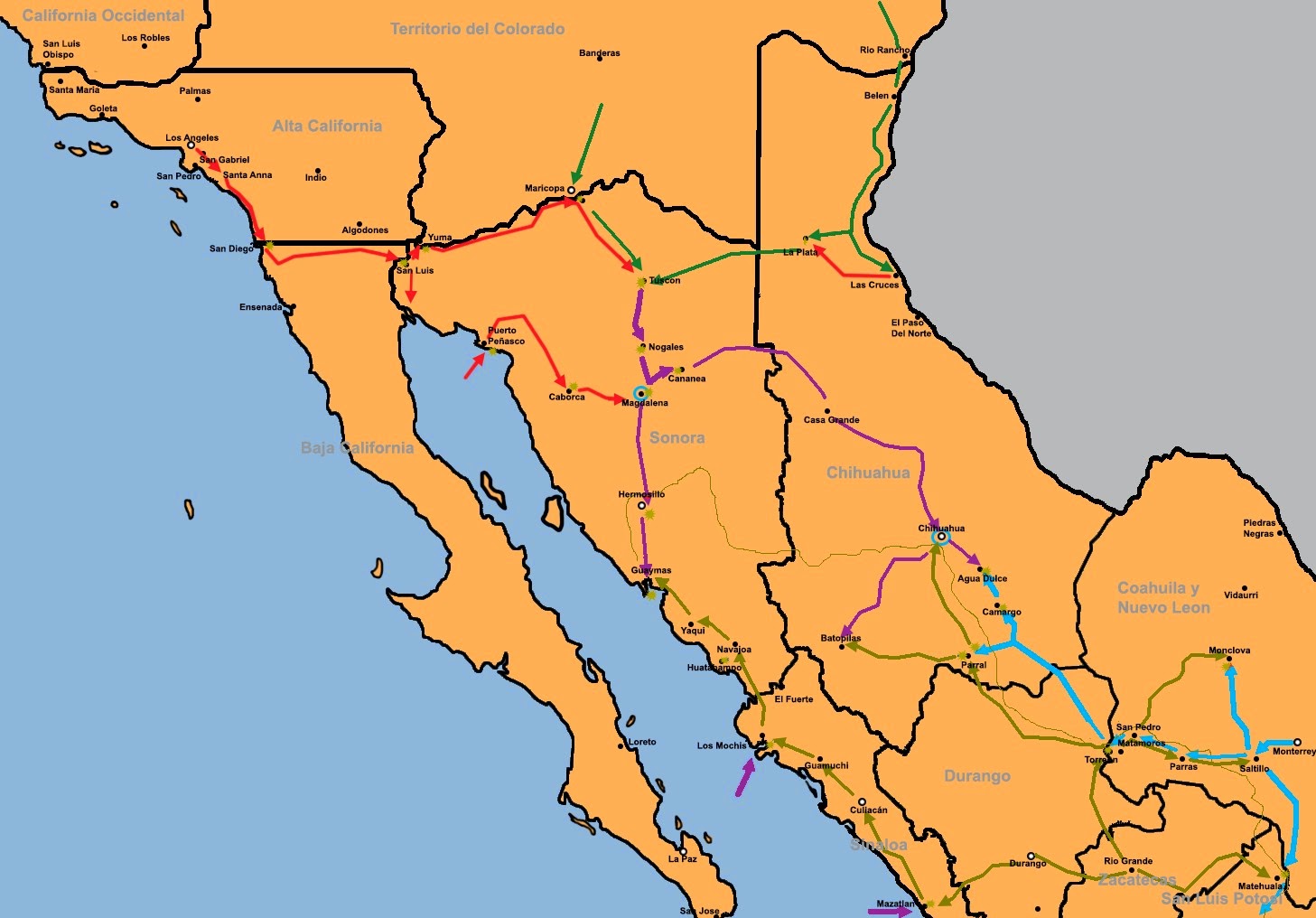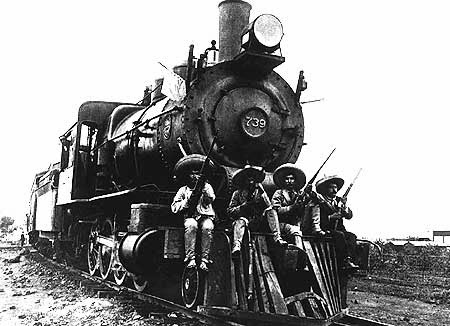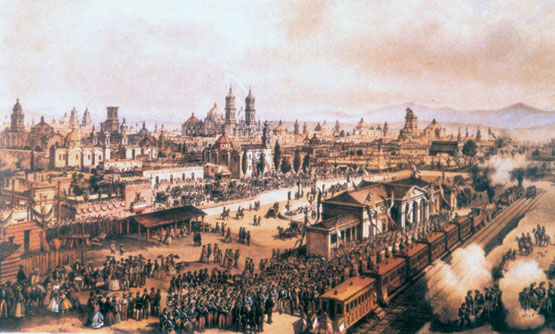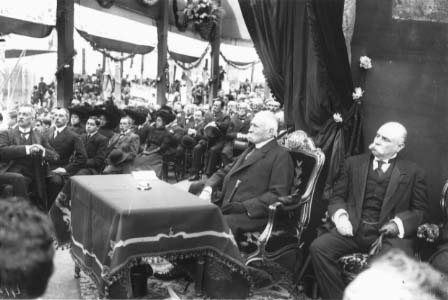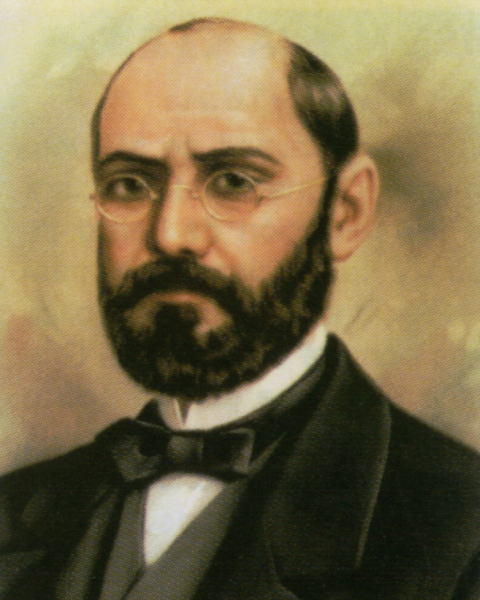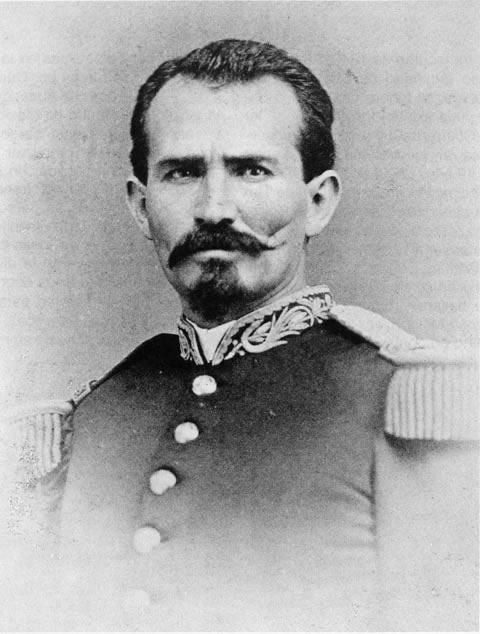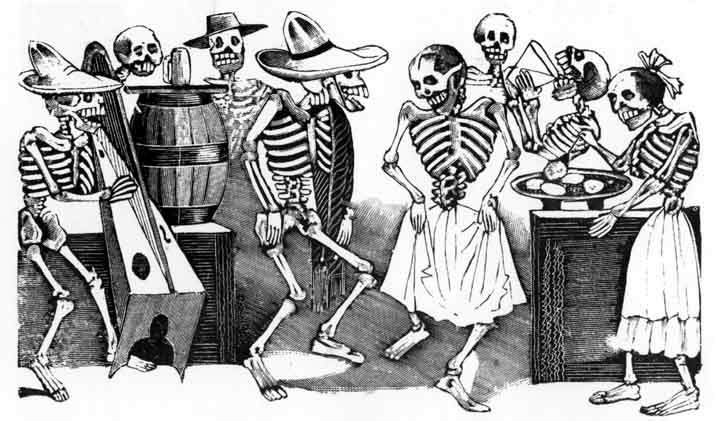I said 5 "short" updates, but I finished in 4. This one is way long so I guess it counts for 2.
Tying Loose Ends (Or I’m just gonna skip writing battles to move this thing along).
While the Plan de Atlixco was a major turning point in the Mexican Civil War, the fighting itself was still far from over; it would continue for nearly two more years.
But, by now all sides had well defined goals to follow - aside from claiming the Presidential desk as their own. The Republican coalition laid out their plans for a revision of the Mexican Constitution and - because they chose to overlook his resignation at the start of the war - defend Juan N. Mendez as the legitimate successor to the Lerdo de Tejada Presidency.
Meanwhile, The Conservatives preferred a status-quo regarding the Constitution and opposed the succession terms the Republicans chose to keep. Their fears were not without reason; The Plan de Atlixco was - although not explicitly worded as such - anti-clerical. The clergy, large land owners, and several Indigenous communities were threatened by it. When word reached Rome even the Pope had something to say about it;
For the Conservatives, the reaction to The Plan de Atlixco created some of the strangest bedfellows. Thomas Mejia had been an early example of indigenous leaders siding with the conservatives, but President Miramon had an easy time convincing others that a Republican victory would result in foreigners hijacking the ejidos for profit. As a result, the Conservative ranks were reinforced, by Totonac and Tarascan “reserves” and recent European immigrants that had fled the wave of anti-clericalism in Europe. In the long run - however - these new recruits were just delaying their eventual downfall of the Miramon government.
So the new alignment was simple and much easier to understand than the apparent free-for-all melee during the early years. At least the main conflict was.
By now the Republicans controlled the Capital, most major ports, rail depots, and industrial cities. And so, they began to bulk up for the final push against the Conservatives. The first years of the war had been defined by the use of mobile infantry on horse back (even if the bloodiest battles were done by foot-soldiers in trenches); this second half was to be defined by the use of “mechanical infantry” on rail [1].
The Republican offensive captured Tepeji and Toluca early in 1884. From there on, the Republican army launched a pronged offensive into Poza Rica and Queretaro. With these victories, it appeared that the end of the war was finally in sight.
Images of the irregular volunteers on rail
A New Set of Rules, And a New Set of States
On October 4th 1884 - almost a year since the Plan de Atlixco was laid out - the Constitutional Congress finally published a draft for the new constitution. The document had been ready weeks earlier but the date of its publication was delayed to coincide with the signing of the 1824 Constitution in order to establish a sense of continuity.
For the most part the Constitution of 1884 followed the guarantees set by the Plan de Atlixco… for the most part. The Federalistas in control of the Continental Congress specifically worded the constitution to highlight their ideals and downplay the liberal rhetoric that angered most conservatives. It was in effect a very elegant document divided into 6 “Titles” of variable length subdivided into 122 Articles. [3]
Representative of the states held in Republican hands began ratifying the Constitution almost immediately - although there was some delay reaching the northerns states. But by the end of the war, most states no longer in rebellion had done so with one notable exception: what was then called the State of Mexico.
Central Mexico had suffered greatly during the conflict; it had been effectively split in two for most of the war. Early on the Federalistas held the southern portion of the state, while the Conservatives set up a shadow government in Pachuca. But by the time the Constitution was signed their fates had been reversed; the Republicans had captured Pachuca and the Conservatives had taken hold of Toluca which later fell to Liberal hands. By the time the Conservative garrison in Tepeji fell, the state government had been disintegrated and the region was being governed as set of separate military districts, supposedly as a necessary measure to defend Mexico City.
It was this particular quirk of history (along with the instance of mining companies in Pachuca) that resulted in the region being re-organized into three separate entities by the end of the war: El Estado de Allende, El Estado de Morelos, and El Estado del Valle de Mexico. [2] Fearing the creation of three central states would upset political balance, congress also allowed for the creation of Baja California [4] as a new state and recreation of Nuevo Leon, which was once again split from Coahuila. Nuevo Leon’s split was spearheaded by Mariano Escobedo, a staunch Liberal who built a reputation as a skilled leader within the Guardia Nacional. Escobedo used the Guardia to take control of Monterrey, which forced Governor Eleuterio Mendoza to flee into Saltillo. Mendoza and his cabinet were then “bribed” to join the Republican side by allowing them to keep control of Coahuila.
The division and admission of new states shows how the war was not won solely by the use of blunt force but also crafty politics on behalf of the Republican coalition. Something that became particularly important as the elections of 1885… which never happened.
A rare picture of Diaz, attending the Constitutional Convention near its closure
Mendez’s Final Days
By the time elections were supposed to happen Queretaro and Guanajuato had been captured, once again linking the northern states to Mexico City. Jalisco, Michoacan, the Yucatan Peninsula, Poza Rica and Tamaulipas remained the last functioning conservative garrisons. But even the latter two of these fell by the summer of 1855. But even if the war was drawing to a close, there was still other matters to attend to, most notably: the Maya revolt in Guerrero, Huerta’s control of Durango, and the rise of banditry across the nation due to the war.
At the time, President Mendez was, in theory, finishing President Lerdo de Tejada’s term. Since his accession as President, Mendez and the rest of the Liberals held a wary eye on their Federalista “allies”, fearing that Gonzalez and company would seize power as soon as they
had the opportunity. As the war against the conservative insurgency - as it was now referred to -prolonged, President Mendez took a drastic step in assuming extraordinary powers and suspended the constitution. This was an absurd act seeing how nobody knew which Constitution he suspended: the old 1824 one (which was technically no longer, or would no longer be, in effect) or the shiny new 1884 one.
But Mendez’s message was clear; he was going to see the war to the end and keep the Liberal Party in power. Everybody knew however, that it was Diaz who was pulling all the strings. [5] And for a short while, the arrangement worked; Gonzalez was content with Mendez in power as a measure to keep Diaz out of it and a way to control the Constitutional Convention. But now that the Constitution was written and approved things needed to change; Mendez was easily deposed by the Federalistas, who used the Guardia Nacional to march into Mexico City while Diaz was busy leading the army into Guadalajara.
José Maria Iglesias, as head of the Supreme Court and a prominent member of the Constitutional Convention, became interim-President until fair and open elections could be organized. He was sworn into office through the new Constitution. [6]
1855 became known as the year without a President, but amazingly it turned out for the better. José Maria Iglesias was a Liberal and a relic of the Juarez Presidency, who strictly adhered to the democratic principles of the Constitutional Convention and was actually willing to compromise. It was his short lived term as interim-President that saw the creation of a National Electoral Board to oversee presidential and gubernatorial elections and guarantee a same process in every state; this is the oldest organization in the world of its kind. [7] The elections - postponed until 1886 - would be the first to be overseen by the Electoral Board.
The Fall of Miramon and the Conservatives
The Conservative forces in Tamaulipas finally surrendered by the summer of 1885, with Poza Rica falling shortly afterwards. General Zaragoza, and the Californio battalion, managed to break through Huertas forces in Chihuahua a year earlier; part of that force had joined Mariano Escobedo’s forces in Coahuila and Nuevo Leon, reinforcing the Republican presence in the north-East. Escobedo marched his forces near the Rio Bravo capturing Matamoros and then moving down the coast towards Victoria. The fall of Poza Rica occurred as Estrada moved south, while a Republican detachment from Veracruz under the command of Ignacio de la Llave approached the state from the south. Governor Napoleon Woll surrendered the state shortly after the fall of Tampico.
Jalisco, where Miramon had taken refuge, continued to be an issue as did Michoacan. In their final days the Conservatives fought harder than ever before believing their loss would cost them their lives. Their fall ultimately came as a result of both external pressure and sour relations between Miguel Miramon and governor Jose Maria Ferreira. Tension between the two grew bad enough that Ferreira ultimately ordered the local police to arrest the “president”. Miramon managed to flee, but was caught by a British captain in Puerto las Peñas as he tried to flee the country as a stowaway in a guano ship. This was happening roughly at the same tim Diaz defeated Thomas Mejia at the battle of Zapopan. Mejia signed the surrender of the conservative forces on November 7th 1855. Officially marking the end of the Mexican Civil War.
For their part in the uprising Tomas Mejia was placed under house arrest in his native Pinal de Amoles, a small mining town deep in Queretaro’s Sierra Gorda. [8] He is still considered a type of folk hero (and patron saint) by the local indigenous community, proud of what Mejia managed to achieve as a poor Indian from the sierras.
Miguel Miramon was tried for his crimes against the nation; the conservative President was exiled to Europe. Miramon found refuge in Vienna where legend has it he actually met the Emperor Maximilian, who dismissed Miramon as “a deluded man living in a fantastical past that never existed”. [9] The Emperor was on the way of passing vast reforms to the structure of the Empire; conservatives like Miramon tended to irritate him quite a bit. Maxilian I, who had a particular love for exotic lands, paid close attention to the political development of Mexico and the Empire of Brazil.
A garrison of conservative volunteers defending Guadalajara
A Few Problems Left to Solve
But Mexico’s problems were far from over. In Durango, Victoriano Huerta still kept part of his little kingdom in tact. While Leopoldo Marquez, refused to recognize Miramon and Mejia’s surrender. His personal forces kept control of Morelia and Patzcuaro. They new government dealt with these freebooters harshly once it regained control of Durango and Michoacan; both men were executed. Yet their presence late in the conflict was part of a larger problem plaguing Mexico’ banditry had returned to the country. It would take over a decade for normalcy to return with the improvement and boom of the economy at the turn of the century.
The Maya revolt had also grown out of proportion. The governments of Yucatan and Campeche had been able to contain the revolt from spreading outside Guerrero, but the Maya rebels were now firmly in control of the territory. Peace in the territory did not rerun until the short Zaragoza Presidency when the Maya were granted a small degree of autonomy and a say on territorial matters. [10] Similarly the Apache were rewarded with a territory of their own carved out of eastern Colorado and northern Chihuahua. [11]
And A Brand New Start
Elections finally did occur on March of 1866 - and the presidential electoral cycle was adjusted likewise. The delay allowed the parties to re-organize themselves properly and for the candidates to campaign thoroughly nation wide. As expected the Federalist rallied behind Manuel Gonzalez Flores, the general that had stuck and fought for the legitimate government from the start and was in many ways the primary architect of the new Republic. To gain further support and gain a further sense of legitimacy, the Federalist Party - now officially styled the Partido Federalista Nacional - held what was the first modern national convention in Mexico. [12] The move by Gonzalez Flores showed great confidence on his behalf, and the convention became the talk of every major newspaper nation wide.
Meanwhile Porfirio Diaz was the excepted nominee for the Liberal Party. Diaz had matured greatly since he seized Mexico City ten years earlier; in between the lawyer-general had had a tumultuous career, helping stabilize the Republic of Gran Cauca in South America, fighting in the Banana War, and leading the Liberal cause throughout the Mexican Civil war. An ardent believer in liberalism, Diaz helped shape the Liberal Party - styled Partido Liberal Mexicano (PLM)- as much as its founder Benito Juarez. Not surprisingly, Diaz spearheaded the Liberal party’s presidential bid. And although they lacked a formal convention, Diaz campaigned by personally touring the country drumming support for the Liberal agenda and establishing new bases for the party nation wide.
Ultimately Gonzalez Flores won the election, the first fully open and popular elections held in Mexico, but it was by a much narrower margin than anticipated. Historians attribute this to the general weariness of the war, the last conservative holdouts swinging towards Gonzalez Flores to prevent Diaz from taking office, and partial blame for the war falling on Diaz and his lackeys - even if Miramon’s “Conservative Insurgency” was published as the official cause.
Surprisingly - unlike his previous behavior - Diaz accepted Gonzalez’ victory; the Liberal Party for their work had gained significant victories across several states. But despite his loss, Porfirio Diaz was instrumental in the re-shaping of Mexico’s political landscape without ever holding the office of President of Mexico. After loosing once more in 1890, Diaz successfully campaigned for the elimination of reelection in Mexico reforming the constitution to a single six year term. Beginning with the Presidency of Ignacio Zaragoza in 1894. Although retired from politics, Diaz continued to be an influential figure in Mexico and later one of Mexico’s most successful businessmen founding Mexico’s larges mining and foundry companies in Mexico with the help of his long time colleague Jose Limantour Marquet.
Manuel Gonzalez Flores was inaugurated as the twenty seventh President of Mexico [13] by June of 1886. That October, he officially declared the 4th of the month a holiday celebrating the anniversary of the Mexican Constitution. It now appeared that Mexico was looking forward to what appeared to be a bright and democratic future.
President Manuel del Refugio Gonzalez Flores
[1] Mexico actually has more rail by this point in TTL, than it had by the Mexican Revolution in OTL, where rail was mostly a local enterprise by the hacendados.
[2] See map bellow.
[3] The constitution resembles the 1857 constitution in content and the 1917 one in structure. The big difference to both of OTL’s constitutions is that there are heavy limits to the federal government (including the fact that the Mexico City basin is not a Federal District but a separate state with its elected state government).
[4] Baja California includes San Diego here and the entire peninsula would have a population of roughly 80,000 at this point.
[5] It might seem ridiculous, but it essentially happened in OTL. Venustiano Carranza was President before 1917 and “elected” after 1917, he took advantage of the constitutional change to backtrack some reforms. In OTL he was killed right after so he is still a “good guy”. But right after him Plutaro Elias Calles established the Maximato. You could theoretically say the 1917 Constitution did’t come into effect until the 1933 Reforms and the election of Lazaro Cardenas. The transition to democracy will still be easier/smoother in TTL.
[6] The Constitution will keep the Head of the Supreme Court in the Presidential line of succession. But like in OTL, it has done away with vice-Presidents seeing how they’ve been a bit of a nuisance so far in every scenario.
[7] Because it is not modern Mexico without an IFE/INE organization (and its a part of our electoral process I like). We’ll call it La Comisión Electoral de la República (CER).
[8] I’ve been there, it is a pretty secluded place.
[9]

[10] The population of what is OTL’s Quintana Roo would be about 10,000 at this point. Statehood would be improbable due to population size, but a say in territorial matters helps. Also while Guerrero was officially named after Vicente Guerrero, but the local Maya insist the territory is named after Gonzalo Guerrero.
[11] Roughly the territory of western New Mexico and the Navajo Nation. This area actually has a higher population than OTL at the time. Since the Long Walk of the Navajo never happened, there’s been some settlement on the western bank of the Rio Bravo as border town with Texas pop up, and most of the Texan and CRA escaped slaved have found refuge there.
[12] Previous nominations were decided mostly through a tap of the finger policy or “dedazo” where as small group of party leaders appointed the nominee.
[13] I’m only counting one term per President (Miramon doesn’t count). I believe I got the count right, but not 100% sure.
[14] Mexico would still go through a small transition period. But by 1900, Mexico would be good to go full steam ahead.
